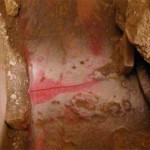Advanced NDT Solutions personnel have extensive experience in DPI – Dye Penetrant Inspection – and LPI – Liquid Penetrant Inspection. ANS’s experienced non destructive testing inspection engineers are certified to ASME and EN codes.
DPI is a low cost inspection method used to locate surface breaking defects in non-porous materials.
DPI is one of the oldest methods of non destructive testing. One of its earliest uses in the 19th Century was in the railway industry to inspect steel components. The method was known as the “Oil and Whiting” method. The components were soaked in oil, cleaned and then a chalk and alcohol developer applied.
Penetrant is applied to the surface of the component, this penetrant is drawn into surface breaking discontinuities. After cleaning the component of excess penetrant a developer is applied which draws the dye out of the discontinuities and so they become visible.
There are several DPI techniques employed by Advanced NDT Solutions. The least sensitive technique but the most versatile and easiest to use is visible penetrant. For greater sensitivity fluorescent DPI is used. This requires a darkened area and the use of a UV light source.
When selecting the technique consideration needs to be given to several factors. The type of discontinuity sought, the expected size of the discontinuity and the surface finish on the material.
Care and consideration must also be given to the compatibility of the chemicals used for the inspection and the material being inspected so that permanent staining or degradation of the material does not occur.



